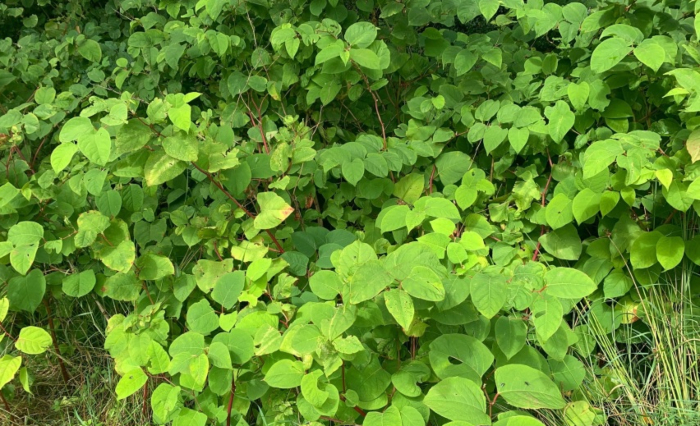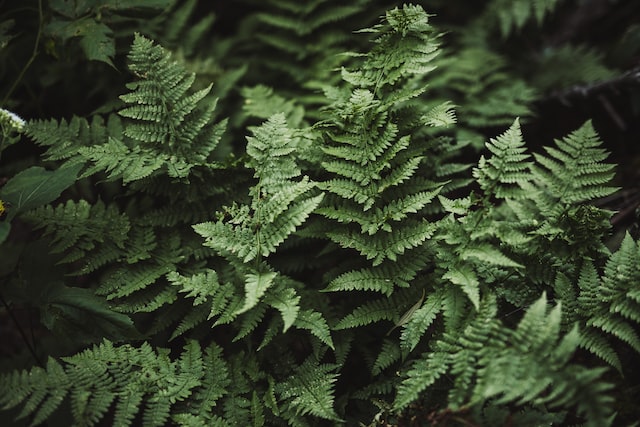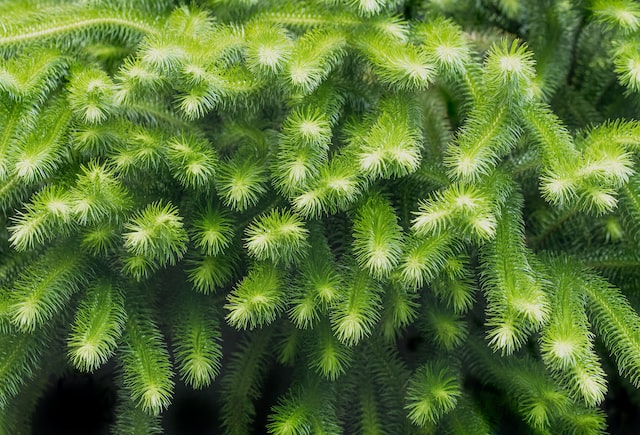
Japanese knotweed is an extremely invasive species of plant that affects many gardens and outdoor spaces across the UK. If you live in one of the 4% of homes affected by Japanese knotweed, then you're probably wondering what you can do to tackle this stubborn weed.
Many Japanese knotweed victims consider planting other species of fast-spreading plants in their outdoor space to outcompete Japanese knotweed for light and nutrients in the hope that it will suppress the Japanese knotweed's growth. Unfortunately, whilst this can temporarily reduce the Japanese knotweed's growth, this is not an effective long-term solution.
What Can Outcompete Japanese Knotweed?
Common Ladyfern

Athyrium filix-femina, also known as the Common Ladyfern, is a large species of fern native to most continents across the globe. It can be used as a competitor against Japanese knotweed due to its appearance and growth style.
The Common Ladyfern can grow up to 3 feet tall, and it has broad, deciduous leaves that cluster. This is beneficial for outcompeting Japanese knotweed, as it can starve the knotweed of light, and its essential nutrients.
Also, the Common Ladyfern is able to grow comfortably in shaded areas unlike Japanese knotweed. This also gives the Common Ladyfern to reproduce through its spores, making it a decent competitor to overshadow Japanese knotweed.
Inland Sea Oats

Chasmanthium latfolium, also known as Inland Sea Oats, is a type of perennial grass which boasts large flower spikelets that look like oats! It is an extremely low-maintenance grass that can grow in the shade. It has a dense coverage which may be able to suppress the growth of Japanese knotweed.
Inland Sea Oats can expand aggressively over the years, to the point where it can create a solid layer of coverage. It is one of few grasses that is able to grow well in shade.
Fan Clubmoss

Lycopodium digitatum, also known as Fan Clubmoss, is an evergreen plant that spreads easily. It is able to form compact mats when it is left to grow. One of the benefits of Fan Clubmoss is that its maximum height is a tiny 0.2 metres, so you won't have to worry about it becoming an eyesore in your garden!
Due to the area it can take up and the dense layer it can produce, this evergreen plant could compete with the troublesome needs of Japanese knotweed.
Can I Replace Japanese Knotweed With a Native Plant?
As we've discussed in this blog, it is possible to outcompete Japanese knotweed with a native plant. But, whether this will work in the long-term is another question.
The main problem is you'd be introducing another invasive weed into your outdoor space, creating another issue to deal with in the future. We'd recommend that you get in touch with a Japanese knotweed control expert.
Conveniently, we're just the team you may need! We offer a 100% no-obligation Japanese knotweed survey for your property. When we say 100% no obligation, we mean it. If you'd just like us to check whether Japanese knotweed is present and then send us on our way, that's completely fine. We're just happy to help where we can.
Japanese Knotweed Removal
If you think that your property may be at risk of Japanese knotweed damage, time is of the essence; in the summer months Japanese knotweed can grow over 10cm a day! Taylor Total Weed Control offer professional knotweed control and removal services. If you’d like to learn more about our services and how they can benefit you, head on over to our website.
Knotweed Removal Services
If you’re not sure if you have a knotweed presence, or if our services are the right fit for you, why not arrange your FREE knotweed survey today?
One of our knotweed experts will survey your lawn and let you know whether or not there is a knotweed presence on your property, and give you a no-obligation quote for our knotweed removal services. When we say, no-obligation - we mean it!
Free Knotweed Survey
Read More: Where is Japanese Knotweed Found
